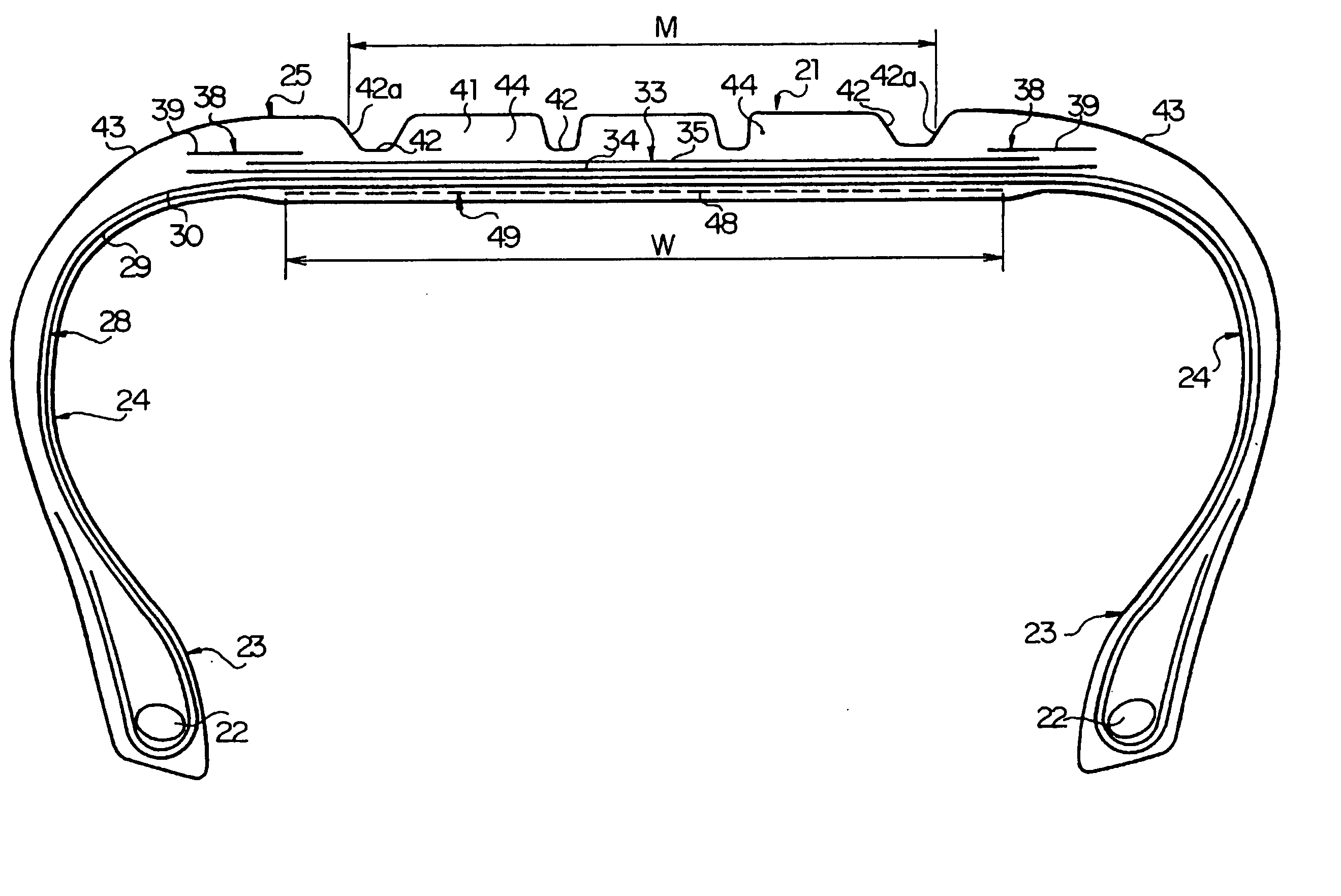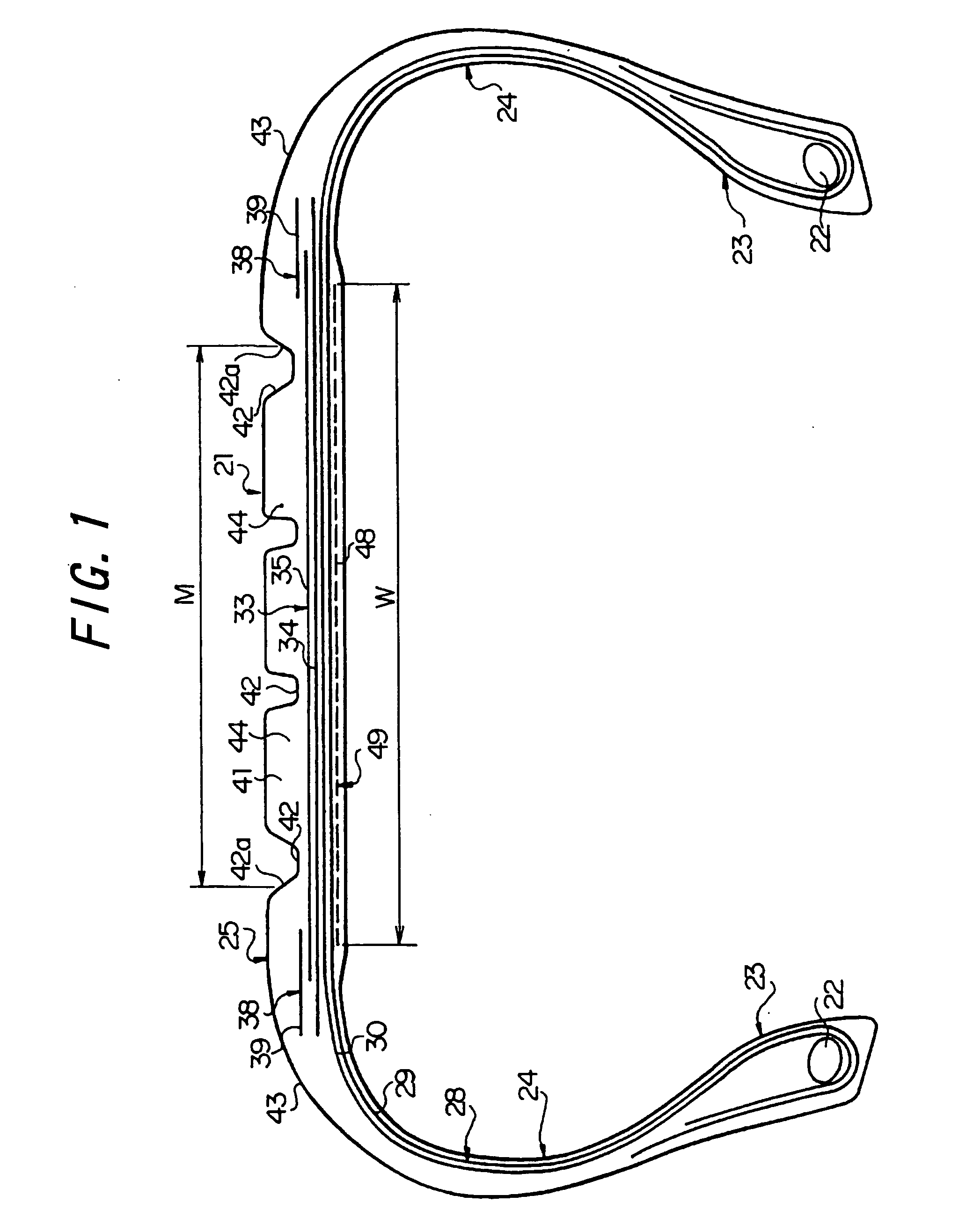Pneumatic Tire
a technology of pneumatic tires and tires, applied in the field of pneumatic tires, can solve the problems of insufficient wear resistance of conventional tires, inability to meet the requirements, and decrease the wear resistance, so as to improve the wear resistance, improve the drivability, and suppress the uneven wear
- Summary
- Abstract
- Description
- Claims
- Application Information
AI Technical Summary
Benefits of technology
Problems solved by technology
Method used
Image
Examples
examples
[0044] Next, the experimental example 1 is discussed. For this experiment, there are prepared a conventional tire 1 in which no reinforcing layer is arranged, a comparative tire 1 in which steel cords having the cross angle K of 30 degrees are embedded in a reinforcing layer and the reinforcing layer is arranged radially inside of the innermost carcass ply, an example tire 1 in which steel cord having the cross angle K of 90 degrees are embedded in a reinforcing layer and the reinforcing layer is arranged between two carcass plies, an example tire 2 in which steel cord having the cross angle K of 90 degrees are embedded in a reinforcing layer and the reinforcing layer is arranged radially inside of the innermost carcass ply, and an example tire 3 in which steel cord having the cross angle K of 70 degrees are embedded in a reinforcing layer and the reinforcing layer is arranged radially inside of the innermost carcass ply.
[0045] The above-mentioned tires are for passenger vehicle an...
PUM
 Login to View More
Login to View More Abstract
Description
Claims
Application Information
 Login to View More
Login to View More - R&D
- Intellectual Property
- Life Sciences
- Materials
- Tech Scout
- Unparalleled Data Quality
- Higher Quality Content
- 60% Fewer Hallucinations
Browse by: Latest US Patents, China's latest patents, Technical Efficacy Thesaurus, Application Domain, Technology Topic, Popular Technical Reports.
© 2025 PatSnap. All rights reserved.Legal|Privacy policy|Modern Slavery Act Transparency Statement|Sitemap|About US| Contact US: help@patsnap.com



